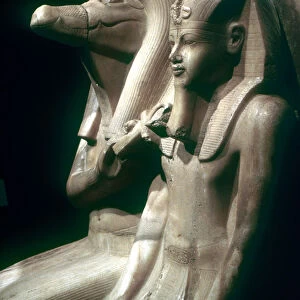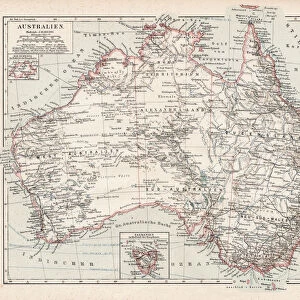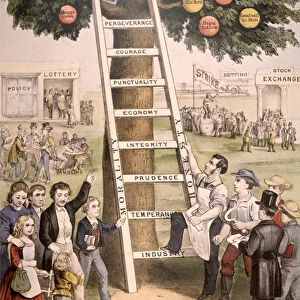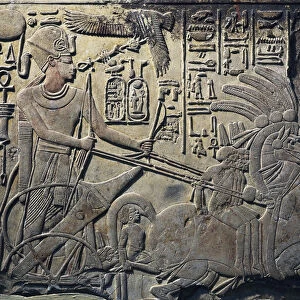Rights Managed > Universal Images Group (UIG) > Art > Archeology
Limestone stele depicting Ramses II offering incense and papyrus to the goddess Astarte
Filename: 940_18_99000803.jpg
Size: 3514 x 2818 (3.7MB)
Date: 10th March 2014
Source: Universal Images Group (UIG)
Source: De Agostini Picture Library
![]()

Wall Art and Photo Gifts from Universal Images Group (UIG)
Limestone stele depicting Ramses II offering incense and papyrus to the goddess Astarte
Egyptian civilization, New Kingdom, Dynasty XIX - Limestone stele depicting Ramses II offering incense and papyrus to the goddess Astarte
Universal Images Group (UIG) manages distribution for many leading specialist agencies worldwide
Media ID 9475577
13th Century Bc 19th Dynasty 2nd Millennium Bc Ancient Egyptian Culture Ankh Archeological Artifact Bas Relief Damaged Female Likeness Goddess Hieroglyph New Kingdom Papyrus Pharaoh Ramses Ii Religious Offering Astarte
EDITORS COMMENTS
This print showcases a remarkable piece of ancient art and craftsmanship - a limestone stele depicting Ramses II, the renowned pharaoh of Egypt's New Kingdom. The bas relief carving depicts Ramses II in full length, offering incense and papyrus to the goddess Astarte. Despite its age, this archeological artifact still exudes an air of grandeur and spirituality. The stele itself is beautifully damaged, bearing witness to the passage of time and adding an intriguing layer of mystery to its story. Its studio shot captures every intricate detail with precision, allowing us to marvel at the skillful execution of hieroglyphs that adorn it. Ramses II's male likeness stands tall beside the elegant female likeness representing Astarte, symbolizing their divine connection. The pharaoh holds an ankh - a symbol of life - while presenting offerings that reflect his devotion to religion and history. Dating back to the 13th century BC during Egypt's 19th Dynasty in the New Kingdom era, this single object transports us back in time to experience ancient Egyptian culture firsthand. It serves as a testament to human representation through art throughout millennia. As we gaze upon this mesmerizing depiction from our modern perspective, we are reminded once again of how much can be learned from studying these religious offerings left behind by our ancestors. This print truly encapsulates both the beauty and significance found within ancient civilizations like Egypt's rich past.
MADE IN THE USA
Safe Shipping with 30 Day Money Back Guarantee
FREE PERSONALISATION*
We are proud to offer a range of customisation features including Personalised Captions, Color Filters and Picture Zoom Tools
SECURE PAYMENTS
We happily accept a wide range of payment options so you can pay for the things you need in the way that is most convenient for you
* Options may vary by product and licensing agreement. Zoomed Pictures can be adjusted in the Cart.









